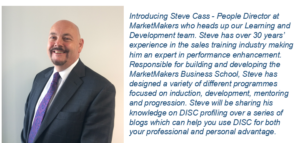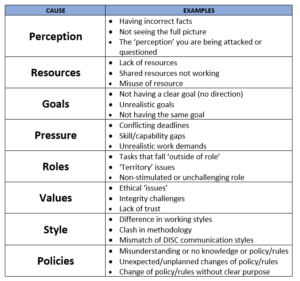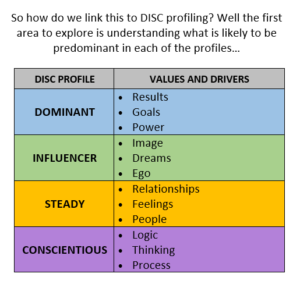Using DISC to manage conflict

One of the most powerful benefits of practicing DISC is that I rarely get involved in highly confrontational situations. That’s not to say in my life I don’t experience conflict, because that wouldn’t be the truth, and sometimes conflict can be positive. It can be highly motivational and be a catalyst of great change and stimulator to get things done!
So let’s start by considering why people become confrontational. A key fact around conflict is that; Conflict only emerges when disagreements, differences, annoyances, competition or inadequacies threaten something important.
Let’s think about that… The less someone cares about a particular thing, the less likely they are going to experience conflict surrounding it. On the other hand, one person caring about something the other person doesn’t give a hoot about, can in itself create a confrontational situation (but only for the one that cares).
There has been plenty of research in the area of conflict within the work environment and a key piece of research “The 8 Causes of Conflict at Work” was put together by Art Bell and Brett Hart in 2002.
Were there any great surprises or huge gasps when the results were revealed – no! However, Bell and Hart do help us understand the 8 causes of conflict.


So to illustrate how to use these two tables when dealing with conflict let’s use the following example.
One colleague loves to have the radio on whilst they work, another finds the radio non-productive and irritating. Because many people do not like dealing with confrontational situations, it is quite possible that the person who dislikes the radio, will not speak up about it. By keeping quiet the situation is only going to get worse for them, sometimes to the point where the person ‘cracks’ and ends up grabbing the radio and promptly throwing it out the window – sounds extreme although I’m sure you get the picture!
Rule Number 1:
Deal with confrontation early – do not leave it as it is only likely to get worse
So coming back to our situation with the radio, how would we slightly change our communication for each communication style? Well, the easiest and most approachable person will always be the Steady person. So we do not need to be overly assertive with this person as this then creates a confrontational situation for the Steady person. So we could simply say “I don’t always find the having the radio on helps me concentrate – so how would you feel about using some headphones so that you can still carry on listening to the radio?”
Now let’s take our Conscientious person. Again I’m still going to open up the conversation by explaining the situation, as follows; “I’d like to bring to your attention that when you have the radio on it tends to distract me perhaps you would consider using headphones alternatively is there a system that we could set up that could work for both of us?” This way I am providing a logical example where we can both be happy.
Working with the Influencer, once again I would tweak my conversation; “I know how you love to listen to your music but at times the radio distracts me so how do you feel about using some headphones so you can still enjoy your music rather than just having to switch the radio off?” By wording your requesting this way, you are making the Influencer think you are doing something for them, therefore not bruising their ego!
Finally we have our Dominant person. The interesting point here is that some Dominant people may find a little conflict stimulating. So let’s try this approach: “When you have the radio on I’m finding that it affects how I work so would you be able to use headphones or we could set up a system that works for both of us, perhaps you have another idea and how to manage this effectively?” This way we are asking the Dominant person what they think is the best idea, so they still feel in control of the situation.
Rule Number 2:
When dealing with conflict at work, focus on the common goal – it is very likely that there will be one when in a work situation.
Always be aware of the environment of where, and when, you having these conversations. For example, if you are dealing with a Dominant person and you are in their office they will feel more empowered and it won’t necessarily help you, so going for a coffee would work better. Also, conversely, if you were dealing with the Steady person they will feel more comfortable in their own environment so have the conversation there.
Finally there is a two-step process we can use for any confrontational situation at work and it works like this:
Step 1
- Consider what is the cause of the conflict (Bell & Hart)?
- What DISC profiles are evident in all the parties?
- What needs to change?
Step 2
- What are the common goals?
- What is the desired outcome?
- Decide what you are going to say
- Decide on where you are going to say it
Finally let me share an interesting quote with you that I always feel sums up how to view conflict:
Without rain flowers don’t grow – without challenge in our lives neither can we!
Tags: Conflict, Conflict Management, DISC, DISC Profiling, Telemarketing

